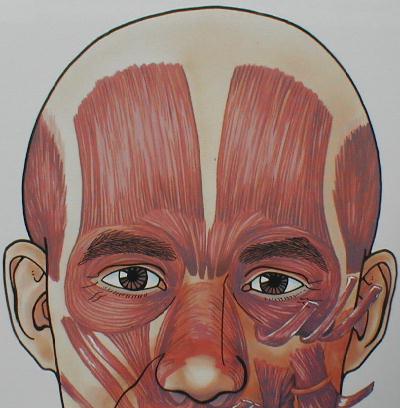| The eyebrows protect the eyes from sweat
and sunlight.
There are four muscles of facial expression which are
inserted into the skin of the eyebrows and
control the eyebrow position:
-
Frontalis elevate the brows
-
Orbicularis oculi: closes the eyelids and draw the
brows towards the eyes
-
Corrugator superiocili: pulls the nasal eyebrow inferiorly
and medially, producing vertical glabellar wrinkles
-
Procerus: pulls the eyebrow inferiorly.
 |
 |
 |
| Click the pictures
to enlarge |
|
|
The eyebrow is securely fastened along the supraorbital
ridge through its attachment to the undersurface of the eyebrow fat pad.
As supraorbital ridge is absent in the lateral third of the orbital rim,
brow ptosis usually begins laterally.
The main cause of brow ptosis is the result of gravitational
pull with age. As explained above, the lateral brow is the most commonly
affected. However, medial eyebrow can occur with atrophy of the eyebrow
fat.
In brow ptosis, the frontalis muscle is used to elevate
the brows and this results in deep forehead furrows. Nonetheless, lateral
brow ptosis usually persists due to the lack of frontalis fibres laterally.

Lateral brow ptosis |

Deep forehead furrows from
frontalis overaction |
|

